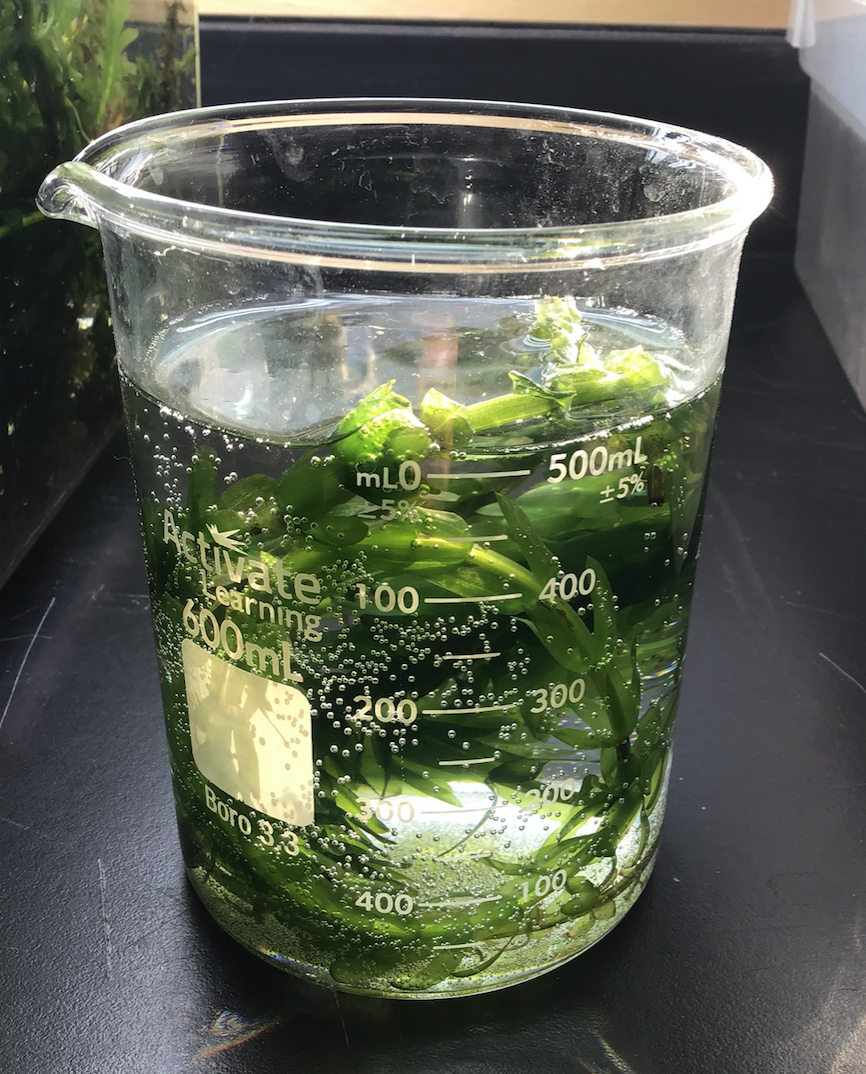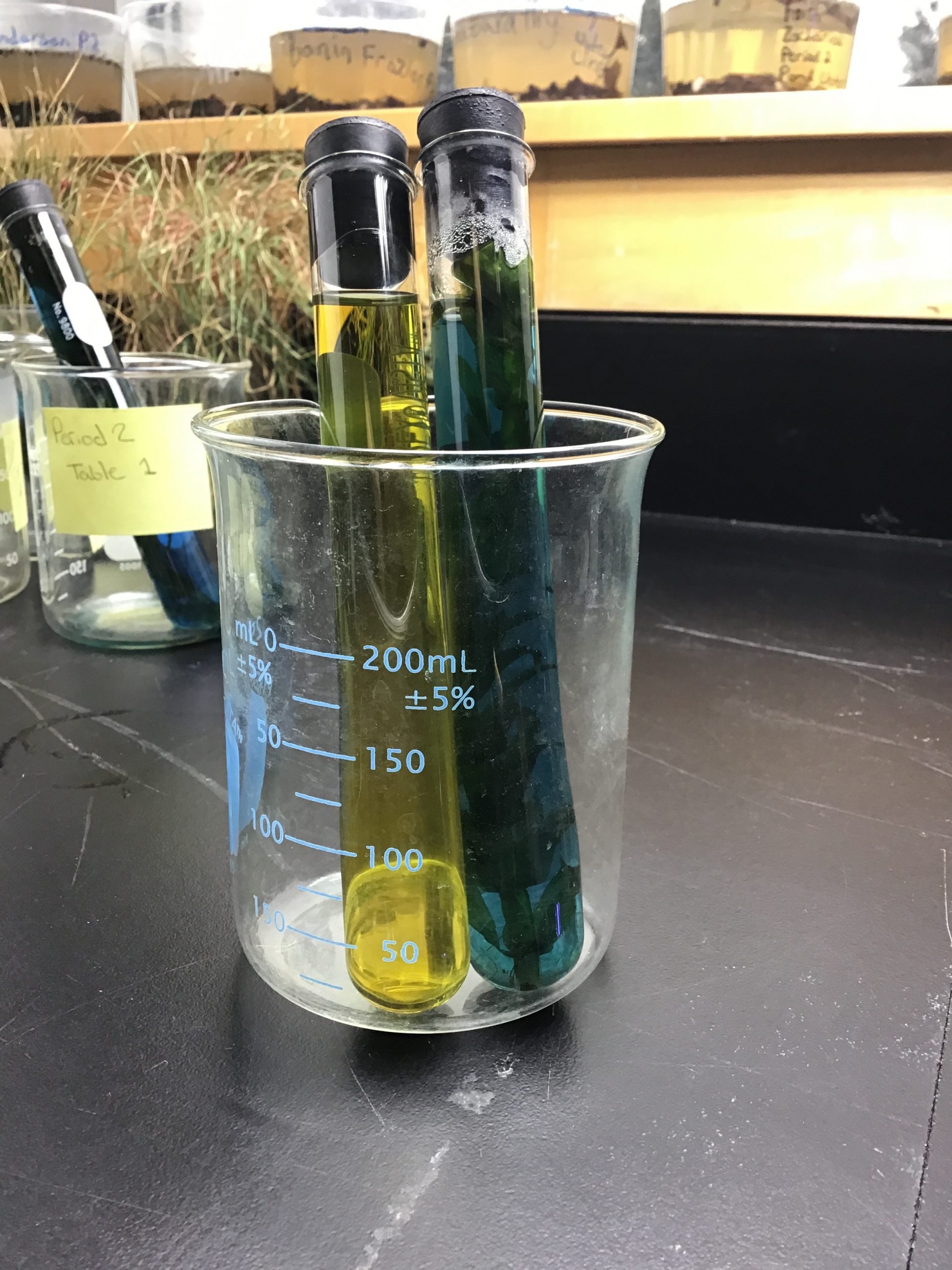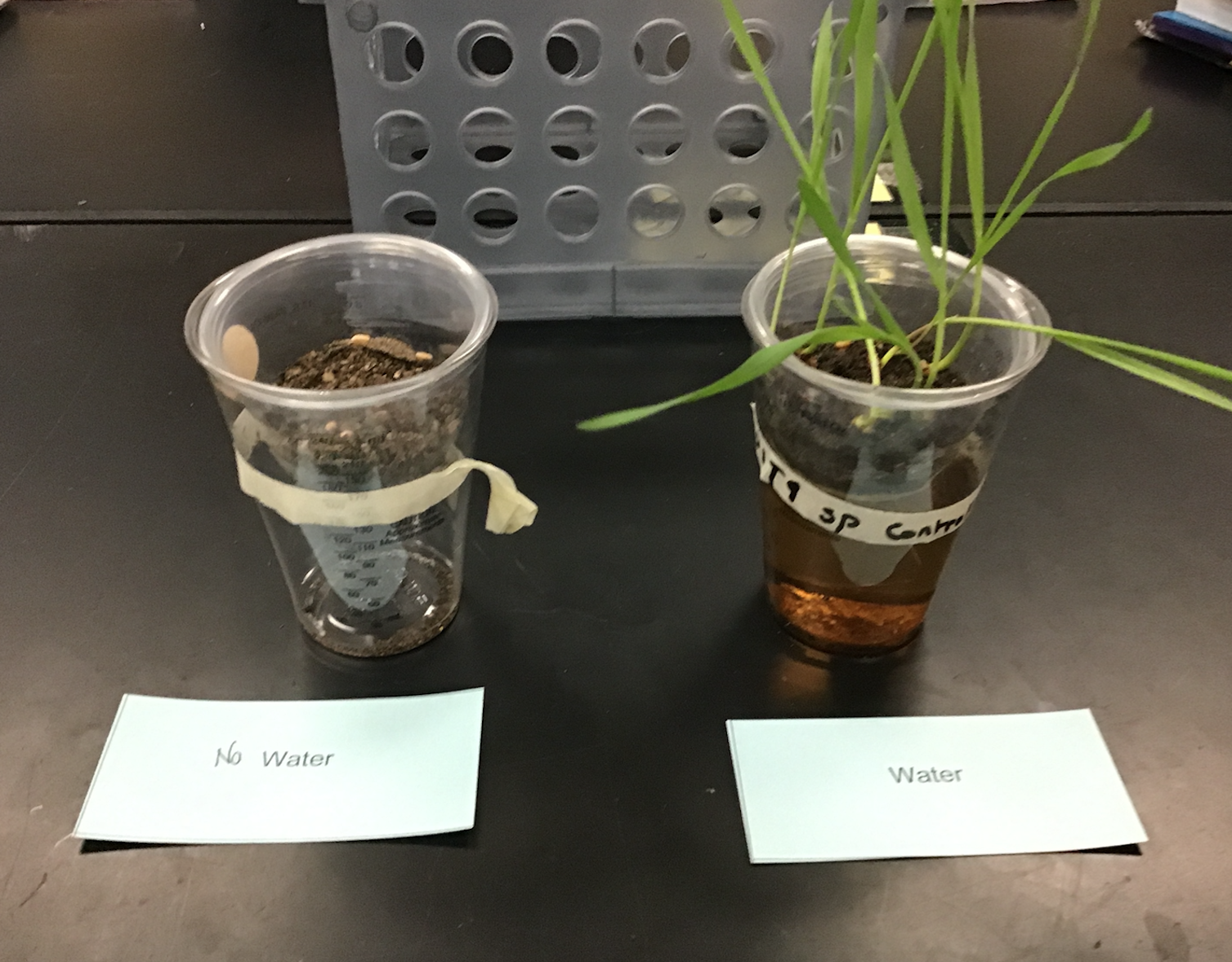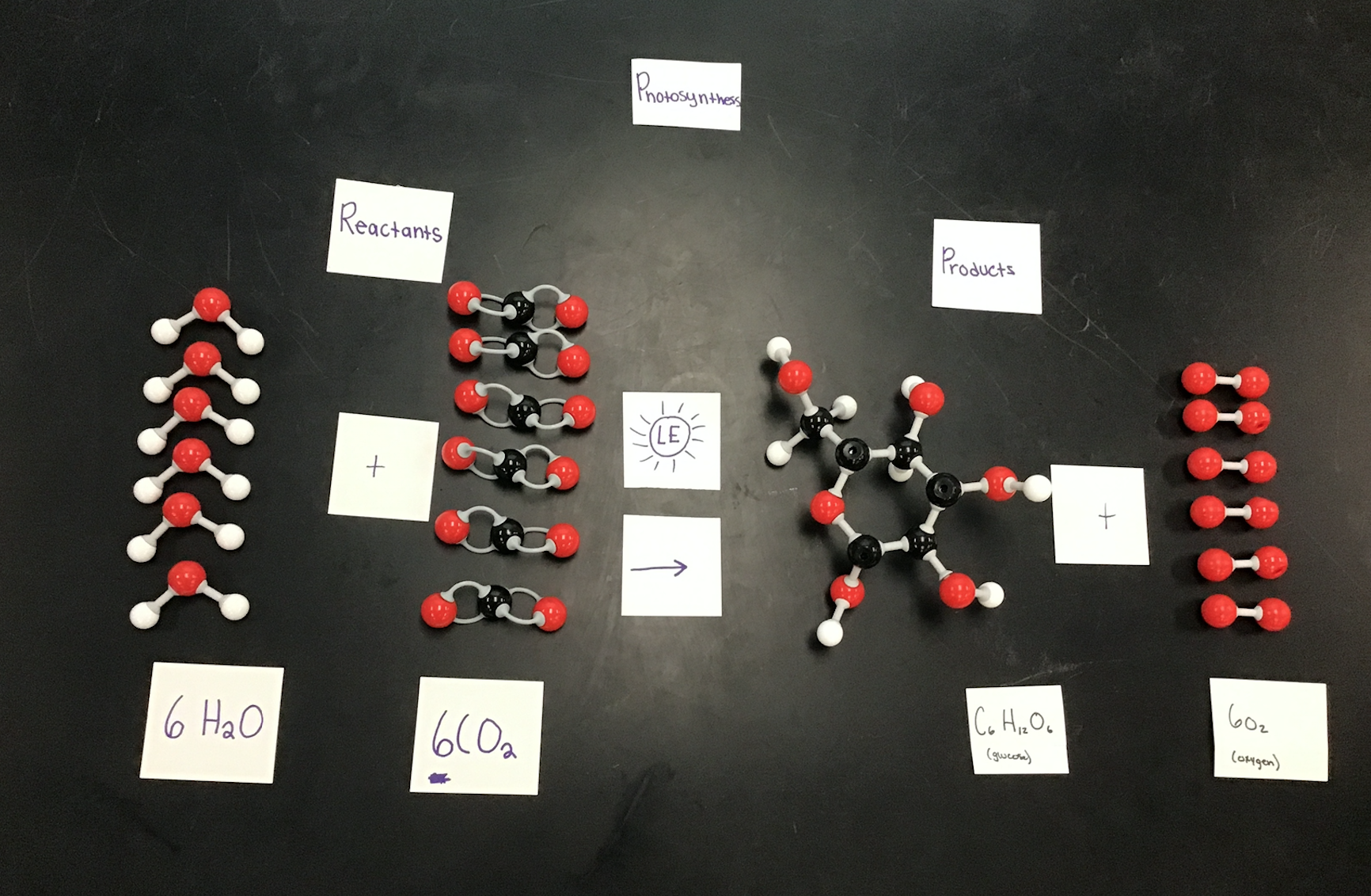On Thursday, December 5th there will be a quiz on Lesson 7 Photosynthesis:
Here is a Quizlet to study
Here’s what you need to know
- Photosynthesis is a chemical reaction requiring light energy that allows plants to make their own food
- All of the food we eat originates with plants
- The reactants in the chemical reaction photosynthesis are Water (H2O) and Carbon Dioxide (CO2).
- The evidence that Water (H2O) is needed for plants to grow and make food comes from our wheatgrass experiments. The seeds that were not watered did not grow at all whereas the seeds that did get watered grew well.
- The evidence that Carbon Dioxide (CO2) is a reactant in photosynthesis comes from our experiment with Bromothymol Blue or BTB an indicator for pH. BTB turns yellow in the presence of lots of CO2 and when the BTB turns blue it means the CO2 levels are low. When we left two test tubes with yellow (High CO2) BTB overnight the one with the elodea plant in it changed to dark blue and the control test tube without a plant remained yellow. The blue color indicated that the plant used up the CO2.
- The products in Photosynthesis are Glucose and Oxygen
- The evidence that Glucose is produced during photosynthesis is that the geranium leaves that were covered with aluminum foil did not show much or any evidence of starch being present. (plants turn the glucose into starch for storage and it is easier to test for the starch than the glucose). This was indicated by the color of the leaf not changing to dark blue when we added iodine, whereas the plant left in the light turned dark blue in the presence of iodine indicating the presence of starch. This also provided evidence that plants need light to do photosynthesis.
- The evidence that Oxygen is produced during photosynthesis comes from the elodea plants kept under the light. We observed bubbles in the beaker with the aquatic plant elodea. We measured that water with a dissolved oxygen concentration (mg/L) probe and determined that the beaker with the plant had higher levels of dissolved oxygen than the beaker with water and no plant. This is evidence that the plant must be producing oxygen.
- The chemical equation for photosynthesis is carbon dioxide+ water –> glucose and oxygen
- When we built the molecules for the chemical reaction we realized that we need 6 H2O molecules and 6 CO2 molecules to make one glucose molecule, so the way to write the chemical reaction more accurately would be 6H2O + 6 CO2 –> Glucose + 6O2. If you count all the atoms on the reactant side(the left) they are equal to all the atoms on the product side so that the equation supports the scientific principle of conservation of mass/matter.
- The energy conversion that takes place in photosynthesis is light energy (LE) gets converted into chemical energy (CE) that is stored in the food molecules in the plant.

Evidence of Starch in geranium leaf left in light

Evidence of Oxygen bubbles in elodea plant left in the light

Evidence that elodea used the CO2 in the BTB when left in the light

Evidence that wheatgrass seeds need water to sprout and grow

Balanced Chemical Reaction for Photosynthesis. Mass is conserved!